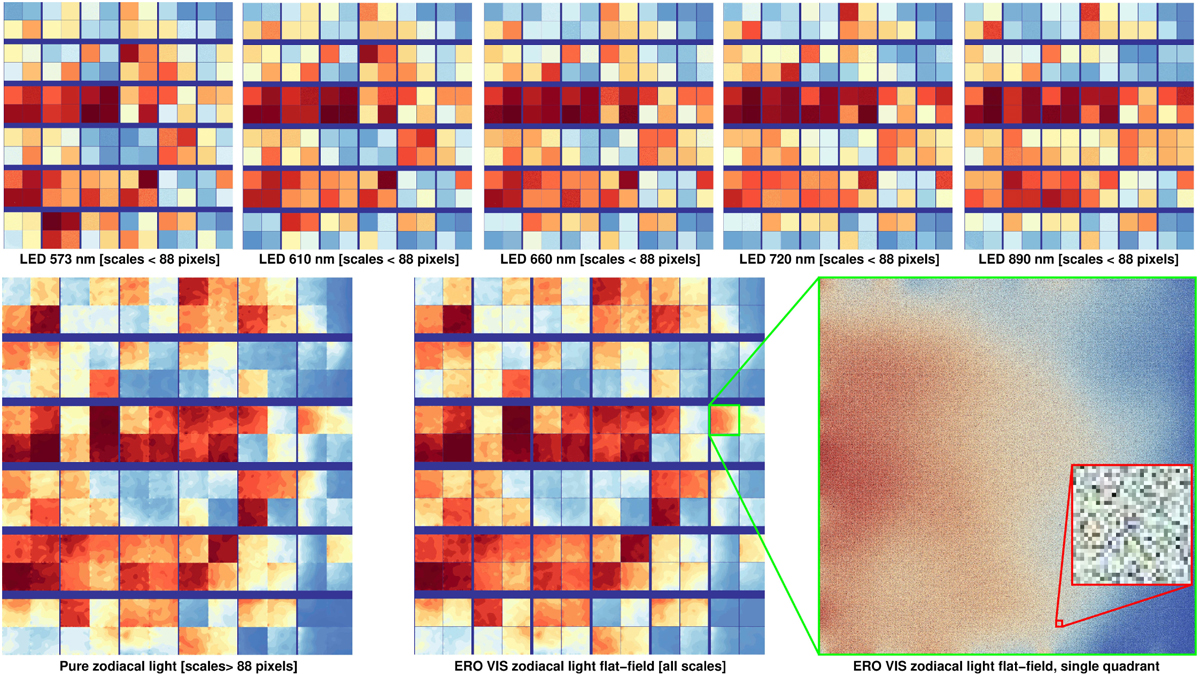Fig. 4

Download original image
ERO zodiacal light flat-field. This is a combination of large scales (>10ʺ) derived solely from the zodiacal light observed in any long VIS exposures and small scales (<10ʺ) coming from a weighted average of five high-S/N LED internal calibration images. These have wavelengths of 573 nm, 610 nm, 660 nm, 720 nm, and 890 nm, matching spectral coverage of VIS. The colour scale is arbitrary, set to explore the full range of intensity within each image. The top five images show the wavelength-dependent evolution of {gain × quantum efficiency}. This large-scale pattern is removed in the flat-field, replaced by the one from the pure zodiacal light image (bottom left). The overall left-to-right gradient is caused by the telescopic off-axis illumination and the VIS shutter effect (see also Euclid Collaboration: Cropper et al. 2025). The final ERO VIS zodiacal flat-field (bottom centre) incorporates all scales present in the Euclid signal, from pixel-to-pixel sensitivity variations (bottom right, highlighting a quadrant covering 205ʺ × 206ʺ, with a zoom on a 30 by 30 pixels area showing the pixel-to-pixel sensitivity differences) to the scale of the FoV.
Current usage metrics show cumulative count of Article Views (full-text article views including HTML views, PDF and ePub downloads, according to the available data) and Abstracts Views on Vision4Press platform.
Data correspond to usage on the plateform after 2015. The current usage metrics is available 48-96 hours after online publication and is updated daily on week days.
Initial download of the metrics may take a while.


